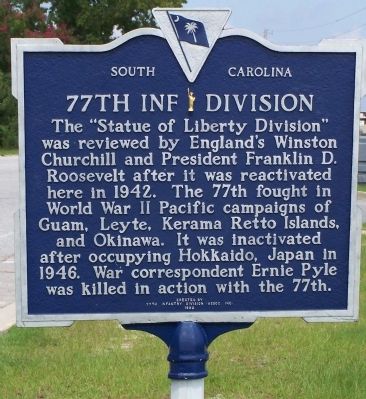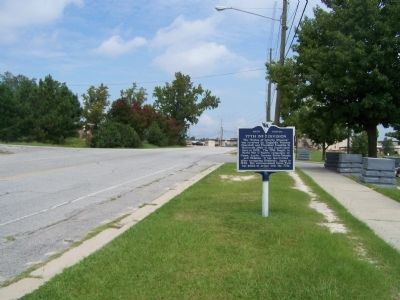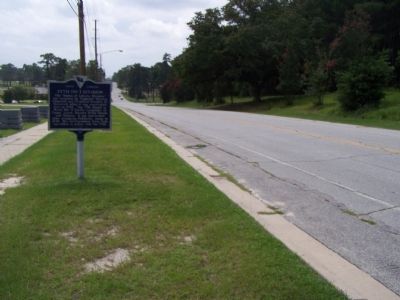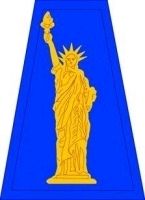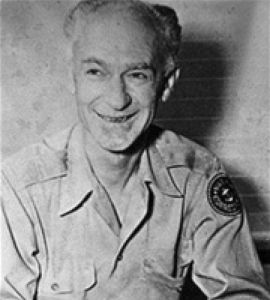Columbia in Richland County, South Carolina — The American South (South Atlantic)
77th Inf Division
Erected 1982 by 77th Infantry Division Association, Inc. (Marker Number 40-93.)
Topics and series. This historical marker is listed in this topic list: War, World II. In addition, it is included in the Former U.S. Presidents: #32 Franklin D. Roosevelt series list. A significant historical year for this entry is 1942.
Location. 34° 1.686′ N, 80° 56.228′ W. Marker is in Columbia, South Carolina, in Richland County. Marker is on Jackson Boulevard, on the right when traveling north. Located between Dixie Road and Huger Avenue. Touch for map. Marker is in this post office area: Columbia SC 29207, United States of America. Touch for directions.
Other nearby markers. At least 8 other markers are within 2 miles of this marker, measured as the crow flies. 102nd Cavalry (about 400 feet away, measured in a direct line); 87th Inf Division (approx. 0.2 miles away); 106th Inf Division (approx. half a mile away); 8th Infantry Division (approx. 0.6 miles away); Bridge at Remagen Stone (approx. 1.2 miles away); 31st Inf Division (approx. 1.2 miles away); Fort Jackson Elementary School / Hood Street Elementary School (approx. 1.3 miles away); 30th Inf Division (approx. 1.3 miles away). Touch for a list and map of all markers in Columbia.
Related marker. Click here for another marker that is related to this marker. ... the relationship, study marker shown.
Also see . . .
1. 77th Infantry Division ("Statue of Liberty"). which served with distinction in World War I and World War II. ...the 77th made an assault landing on Guam, 21 July 1944.... In late March 1945, the division made 15 landings, securing Kerama Retto and Keise Shima for the assault on Okinawa. (Submitted on September 7, 2012, by Mike Stroud of Bluffton, South Carolina.)
2. Ernest Taylor Pyle. (August 3, 1900 – April 18, 1945) was an American journalist who wrote as a roving correspondent for the Scripps Howard newspaper chain from 1935 until his death in combat during World War II. He won the Pulitzer Prize in 1944. His articles, about the out-of-the-way places he visited and the people who lived there, were written in a folksy
style, much like a personal letter to a friend. He enjoyed a following in some 300 newspapers.
On April 18, 1945, Pyle died on Iejima (then known as Ie Shima), an island northwest of Okinawa Island, after being hit by Japanese machine-gun fire. (Submitted on September 7, 2012, by Mike Stroud of Bluffton, South Carolina.)
Credits. This page was last revised on December 5, 2020. It was originally submitted on September 7, 2012, by Mike Stroud of Bluffton, South Carolina. This page has been viewed 699 times since then and 38 times this year. Photos: 1, 2, 3. submitted on September 8, 2012, by Mike Stroud of Bluffton, South Carolina. 4, 5. submitted on September 7, 2012, by Mike Stroud of Bluffton, South Carolina.
